Swimming pools are great places to relax and enjoy some time in the sun. But, they also require a significant amount of upkeep, from ensuring adequate water levels and appropriate chemical balance to cleaning deck surfaces and protecting your pool against debris come fall season.
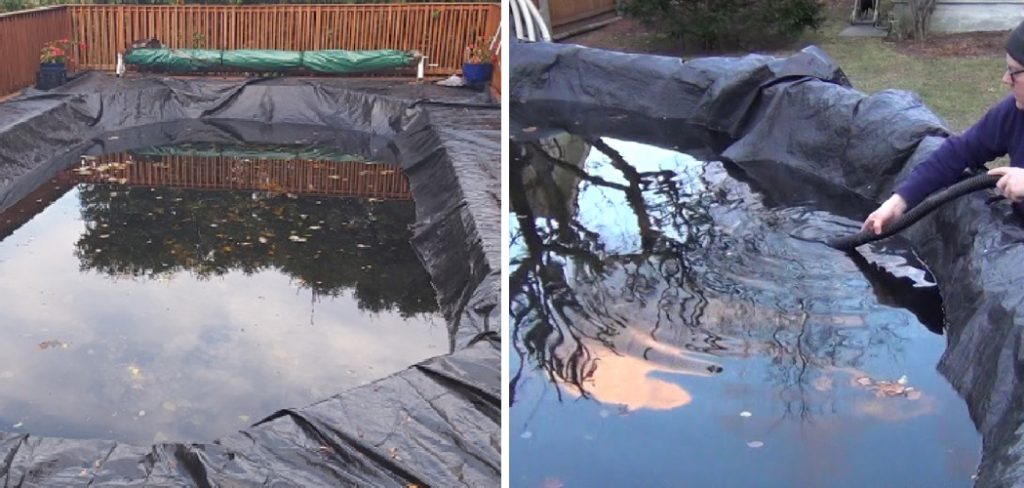
One task that is essential when prepping for winter months – but often overlooked – is draining a pool cover. Having efficient draining capabilities not only prevents mold from growing on top of the cover over winter, but it can also help promote better water circulation throughout summer too!
Ready to tackle this maintenance job? Then hang tight because we’re about to get into everything you need to know about how to drain a pool cover efficiently so your pool stays healthy year-round!
Do You Drain Water off a Pool Cover?
Yes, draining water off a pool cover is an important part of regular maintenance for your swimming pool. Pool covers are designed to keep debris, dirt, and other contaminants out of the water while also helping to conserve heat in the colder months. However, if too much liquid accumulates on top of the cover it can lead to mold and mildew growth. As a result, it is important to properly drain water off the cover regularly.
There are several ways you can go about doing this. The simplest way is to use gravity and let nature take its course by tilting the pool cover so that the low side of the cover drains into an area where the runoff can be easily collected and disposed of.
A second option is to use a submersible pump that will siphon the water into a bucket or other receptacle, which can then be emptied. Additionally, some pool covers come with an integrated drainage system that allows you to easily drain off excess liquid.
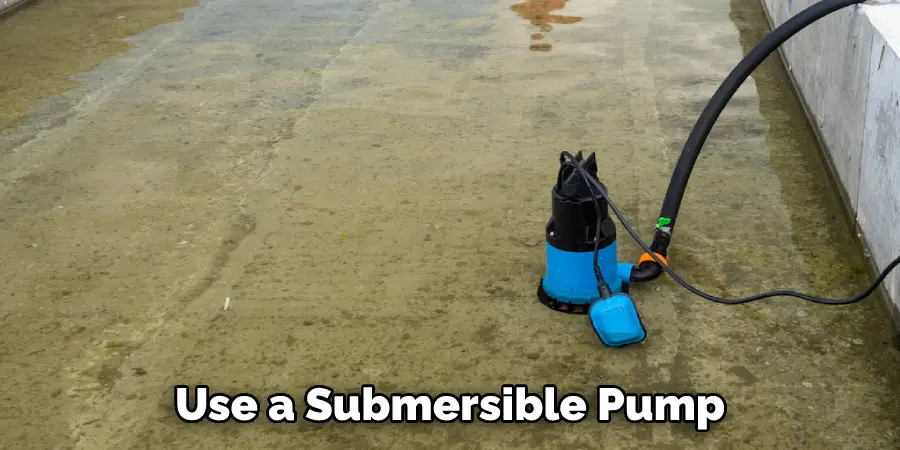
Regardless of the method used, it is important to make sure that the cover is completely dry before you start using the pool again. This will help to ensure that your swimming experience is as safe and enjoyable as possible. With regular maintenance, draining water off your pool cover can help to keep your pool in top condition for years of use.
10 Methods How to Drain a Pool Cover
1. Using a Submersible Pump
One of the most common ways to drain a pool cover is by using a submersible pump. This type of pump is designed to be placed in the water and will quickly remove the water from the cover. The pump should be plugged into a safe outdoor outlet, and the output hose should be placed near an appropriate drainage area.
Make sure that the drainage area is away from your pool, house, and other structures. When the pump is done draining the cover, unplug it from the outlet and store for future use. However, do not forget to turn off the power switch when you are done using the pump.
2. Using a Sump Pump
Another common way to drain a pool cover is by using a sump pump. This type of pump is typically used to remove water from basements or crawlspaces but can also be used to remove water from a pool cover. To use a sump pump, you will need to place the pump near the pool cover and connect a hose to the outlet side of the pump.
Place the free end of the hose into a nearby storm drain or outside area that will not be damaged by the displaced water. Plug in the sump pump and turn it on to allow the water to drain from the pool cover. When all of the water has been removed, you can unplug the sump pump and safely store it for future use.
3. Using a Wet/Dry Vacuum
A wet/dry vacuum can also be used to remove water from a pool cover. This type of vacuum is designed to be used on wet surfaces, making it ideal for this application. Before using the wet/dry vacuum, make sure to remove any debris or other objects from the pool cover.
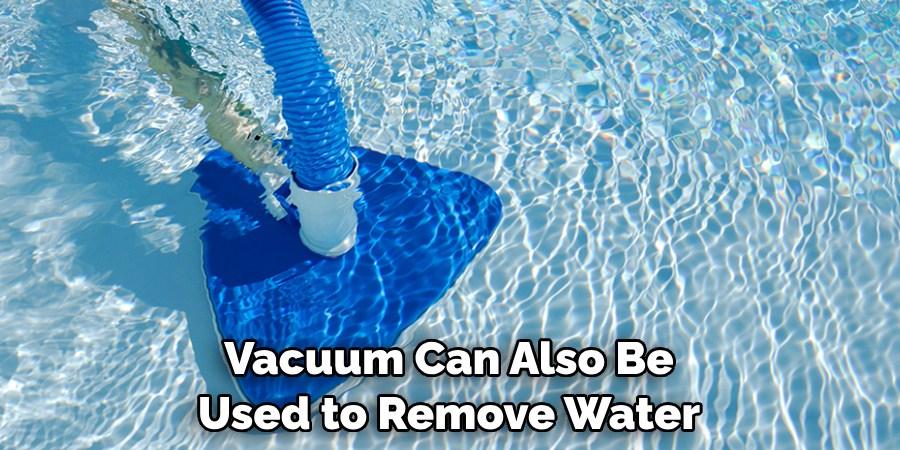
Once the area is clear of debris, start the vacuum and slowly move it across the surface of the pool cover. This should begin to pull water away from the cover into the container of the wet/dry vacuum. Be sure to empty the container regularly, as it will fill quickly.
4. Using a Garden Hose
A garden hose can be used to slowly remove water from a pool cover. This method will take longer than using a submersible or sump pump, but can be effective if you do not have access to one of these pumps. To drain a pool cover using a garden hose, start by connecting the hose to an outside faucet or spigot.
Then, attach the other end of the hose to a valve near the edge of the pool. Make sure that the valve is opened for water to flow through it. Slowly turn on the water from the faucet and allow it to flow through the hose.
5. Using Gravity
If the pool cover is higher than the pool itself, you can use gravity to your advantage and allow the water to drain off of the cover and into the pool. Using a garden hose, you will need to attach one end to the pool drain. Then, stretch out the other end of the hose on top of the pool cover. The hose should be secure and at a sloping angle so that it will bring the water to the center of the pool cover and allow it to flow down into the pool.
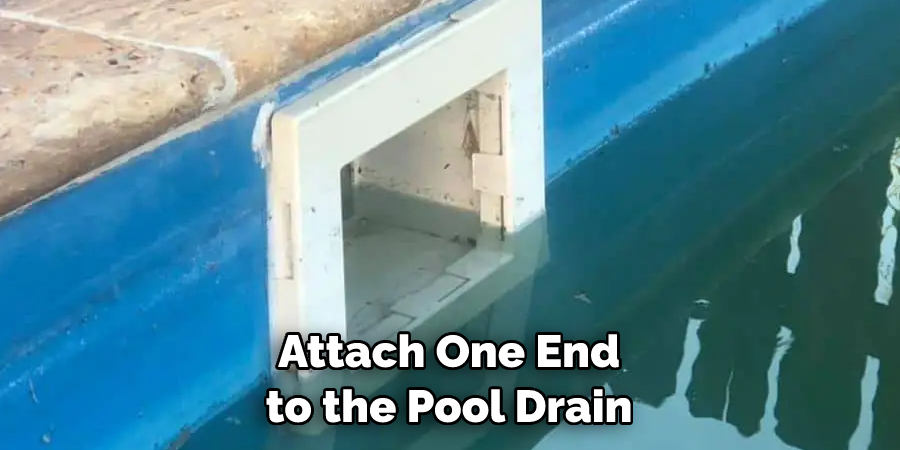
6. Using an Air Pump
An air pump can be used to create airflow under the pool cover, which will help to evaporate the water on the surface of the cover. To use an air pump, attach the airline to the skimmer or other appropriate port in the pool. Place the end of the airline under the pool cover and turn on the pump.
This will create a suction, drawing air under the cover. Leave the air pump running for several hours to allow the air to circulate and help evaporate any remaining water on the cover. When finished, turn off the pump and remove the air line from the pool.
7. Using Solar Energy
Solar energy can be harnessed to help remove water from a pool cover. By placing black plastic over the surface of the cover, you can create a greenhouse effect that will cause the water to evaporate more quickly.
This method is best suited for smaller pools that are not in direct sunlight. Although it may take a few days to completely drain the cover, you can reduce evaporation time significantly by using this method. Additionally, this will help keep your pool warmer during the summer months.
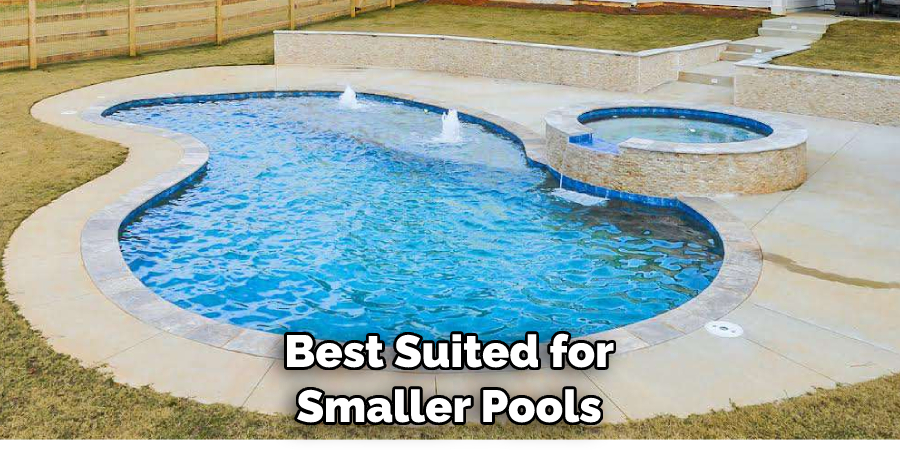
8. Using Absorbent Materials
Absorbent materials such as sand, sawdust, or kitty litter can be placed on top of the pool cover to absorb some of the water. Once the absorbent material has absorbed as much water as possible, it can then be removed and disposed of properly.
Be sure to use an absorbent material that is safe for the pool and does not contain any chemicals or other substances that could damage the pool’s surface. Alternatively, the absorbent material can be placed in a drainage system to help direct any remaining water away from the pool cover.
9. Using Desiccants
Desiccants are materials that absorb moisture from the air. When placed on top of a pool cover, they can help to remove water quickly and easily. Desiccants can be found in many stores, and can be placed on the pool cover for a few days to help to reduce the amount of water on the cover.
It is important to check the desiccant regularly, as they may need to be replaced if they become saturated with water. Once the pool cover is dry, it can be removed and stored until needed.
10. Using a Pool Cover Drainage System
Many pool covers come with an integrated drainage system that makes it easy to drain off excess liquid. This is a great way to reduce the amount of time and effort required to empty large pools. Simply position the drain near the lowest point on your pool cover and attach the hose to your garden hose.
Turn the valve on the drainage system to release water from the cover. Once you have drained off as much water as you can, disconnect the hose and turn off the valve. You can then fold up the pool cover and store it away for future use.
Conclusion
In conclusion, the process of draining a pool cover is not necessarily an overly difficult task. There are several common tools and steps you can use in order to successfully drain the rain water that has collected on top of the pool cover, including using a special pump or hauling the water away with a bucket and hose.
It is always best to consult with a professional, however, as they will have experience with types or designs of pools that may require more attention when it comes to draining their covers properly. Hopefully, this article gave you some helpful tips about how to drain a pool cover successfully, so now that you have the proper knowledge on how to get the job done, why not give it a try today?

